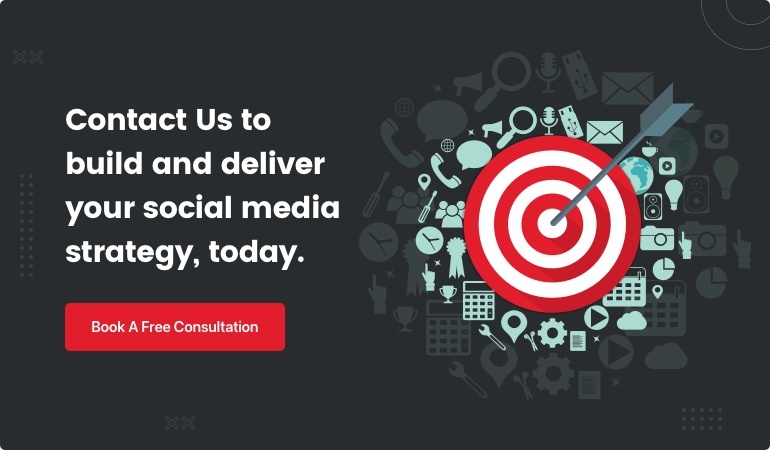Introduction: The Importance of Converting Interest into Sales
In the bustling digital marketplace of New York City, capturing the attention of potential customers is only the first step. The real challenge lies in transforming that initial interest into actual sales. This transition is critical for the success of any business, especially in a competitive landscape like NYC, where consumers are constantly bombarded with countless options.
As a head of marketing or digital marketing, you might be grappling with this challenge. Having a massive pool of interested leads but not being able to convert them into customers can be frustrating. But don’t fret; there’s a proven process that can help you achieve this, and it's all about understanding your customers, building an effective conversion path, and persistent follow-up.
This article will guide you through the NYC secret to converting interest into sales, leveraging the power of digital marketing and social selling. We'll discuss customer profiling, lead nurturing, social media marketing, conversion rate optimization, and much more. By the end, you'll have a better understanding of how to turn your leads into customers and reap the benefits of your digital marketing efforts.
Remember, the goal is not just to attract potential customers but to engage them in a way that leads to sales, and ultimately customer loyalty. Now, let's dive in and unveil the NYC secret to transforming interest into sales.
Understanding Your Customers: The First Step to Conversion
Welcome to the journey of converting interest into sales. In the hustle and bustle of the NYC market, understanding your customers is the golden ticket to successful conversions. This process is not just about knowing their names or job titles. It's about digging deeper into their needs, preferences, and behaviors to develop a strategic approach that resonates with them.
The Role of Customer Profiling in Sales Conversion
Customer profiling plays a pivotal role in sales conversion. It's like having a detailed map guiding you through the complex terrain of your customer's needs and preferences.
Imagine your customer as a puzzle. Each piece represents a facet of their personality, such as their demographic information, behavioral traits, interests, motivations, and pain points. When put together, these pieces form a comprehensive image of your customer, giving you the insight you need to tailor your marketing strategies.
By using customer profiling, you can identify the key pain points your customers have, their goals, and challenges. This information helps you to understand what is pushing them to make a purchasing decision, allowing you to craft messaging that resonates and makes a compelling case for your solution.
How to Effectively Understand Your Customers' Needs
To effectively understand your customers' needs, you must leverage the power of data. In this digital age, you have access to a wealth of data about your customers. Tracking website behavior, monitoring social media interactions, and analyzing email marketing responses can yield invaluable insights into your audience.
Take advantage of analytics tools to understand what kind of content resonates with your audience, which marketing channels are most effective, and when the best time is to engage with them. This data-driven approach helps to ensure your marketing efforts are targeted and effective, increasing your chances of converting interest into sales.
But remember, understanding your audience is not a one-time task. People change, and so do their needs and preferences. Regularly reviewing and updating your buyer personas is crucial to keep your marketing efforts relevant and effective.
In conclusion, understanding your customers is a critical first step in the journey of converting interest into sales. As we navigate the NYC market, it's important to remember that your customers are the heart of your business. The better you understand them, the better you can serve them, and the more successful your marketing efforts will be.
Ready to dive deeper into the NYC approach to building a conversion path? Stay tuned for our next section on building a conversion path, where we'll reveal how a well-defined conversion path can increase your conversion rates. Explore our Digital Marketing Guide for more insights into conquering the NYC market.

Building a Conversion Path: The NYC Approach
New York City, the city that never sleeps, is often considered the epicenter of commerce, teeming with businesses vying for attention in the digital domain. Emulating their approach, let's delve into the art of building a conversion path that transforms casual interest into tangible sales.
The Importance of a Well-Defined Conversion Path
A conversion path serves as the yellow brick road that guides potential customers from the realm of interest to the land of sales. Without it, leads can easily lose their way, wandering off to competitors, or worse, losing interest altogether. A well-defined conversion path is your strategic blueprint. It outlines the steps leads need to take to become customers, making the buying journey seamless and enjoyable.
In the bustling digital landscape of NYC, a well-structured conversion path is not just a nice-to-have; it's a necessity. It's the difference between a potential customer getting lost in the crowded online market and successfully reaching the checkout page on your website.
Steps to Building an Effective Conversion Path
Building an effective conversion path is akin to constructing a skyscraper. It requires a solid foundation, careful planning, and meticulous execution. Here's the NYC approach to building a conversion path that converts:
-
Understand Your Customers: The first step is to understand who you're trying to convert. Delve into your customers' preferences, pain points, and motivations. Use this information to tailor your conversion path to their specific needs and behaviors.
-
Create a Conversion Strategy: Once you have a firm grasp of your customers, construct a conversion strategy that nurtures and converts them. This can include leveraging social media, email marketing, content creation, and more.
-
Establish Trust: As we learn from the competitive NYC market, trust is paramount. Earn your leads' trust by showcasing testimonials, collaborating with influencers, and creating high-value content.
-
Fast and Consistent Follow-Up: Time is of the essence in the fast-paced NYC market. The faster you follow up with a lead, the higher your chances of conversion. Automation can be your best friend here, ensuring you get to your leads within minutes and qualify them for marketing or sales.
-
Nurture Leads: Use personalized emails, SMS, and DMs to nurture leads. Each message should deliver content that hooks your leads' interest and nudges them along the conversion path.
-
Make the Purchase Easy: Finally, make the purchase or opt-in process as simple as possible. The less friction there is, the more likely leads are to convert.
By following these steps, you'll not only create a well-defined conversion path but also a system that you can replicate for every lead. This NYC approach will save time, increase efficiency, and most importantly, transform interest into sales. Interested in learning more about the NYC approach to digital marketing? Check out our comprehensive Digital Marketing Guide for more insights on dominating the NYC market.
The Power of Follow-Up: Maintaining Engagement for Conversion
As we peel back layers of the NYC approach to digital marketing, we come across the power of follow-up. This often-overlooked component is essential for maintaining engagement and steering potential leads towards conversion.
Why Quick and Consistent Follow-Up is Crucial
The NYC digital landscape is fast-paced and competitive. A delay in response time can mean the difference between bagging a sale and losing a potential lead to a competitor. Research suggests that a lead's interest is at its peak within five minutes of initial engagement. Therefore, a rapid response during this window can significantly increase the chances of conversion.
A consistent follow-up strategy is equally important. It not only keeps your brand top-of-mind for potential customers but also demonstrates your commitment to addressing their needs. This strategy can be a game-changer for digital marketing heads grappling with low brand awareness and a deficiency of high-quality leads.
Best Practices for Effective Follow-Up
To ensure effective follow-up, it's crucial to leverage automation. This means that you reach out to the lead within minutes and proceed to qualify them for marketing or sales. Automation tools can help you maintain consistency in follow-up and allow you to manage the intricate details of your digital marketing campaigns efficiently.
The follow-up content should be personalized and tailored to match each lead's persona and their stage in the marketing funnel. This includes content that outlines why they would want to buy and how they can use your product or service. Follow-ups should also be triggered by high-intent behavior such as visiting your pricing page or signing up for a demo.
To further improve your follow-up, consider incorporating email, SMS, or direct messages (DMs) on social media. These channels offer a level of personalization that can foster a personal connection with your lead. Every message should deliver content that hooks your lead's interest and nudges them along the conversion path.
Remember, the goal is authentic engagement, not superficial metrics. This means focusing on genuine interactions that lead to customer loyalty and, ultimately, sales.
Moving forward, we'll delve into the role of email and retargeting in the nurturing of leads, an essential part of the NYC strategy for transforming interest into sales. Stay tuned as we continue our exploration of the NYC approach to digital marketing.

Nurturing Leads: The Role of Email and Retargeting Ads
Turning interest into sales is like tending to a garden. You need to water and nurture the seeds of interest before they can bloom into fruitful sales. In this context, email marketing and retargeting ads are your watering cans and fertilizers, nourishing leads and guiding them towards conversion. Let's delve into how these tools can help you transform interest into sales within the vibrant NYC market.
How Email Marketing Can Nurture and Requalify Leads
It's no secret that personalization is key to effective email marketing. By addressing the specific needs and interests of your leads, you can foster a strong connection that encourages them to engage further with your brand. Implementing personalized email campaigns and automated drip campaigns can guide leads through the buyer's journey, providing relevant content at each stage. You can further boost engagement by sharing regular updates about your company and industry news through newsletters.
In the bustling city of New York, where competition is fierce, segmentation is crucial. Dividing your email list into smaller groups based on demographics, interests, or behaviors allows for more personalized and targeted email campaigns. This strategy can help your brand stand out amidst the NYC noise and requalify leads that might have gone cold.
The Power of Retargeting Ads in Lead Nurturing
Where email marketing builds a direct, personal connection with leads, retargeting ads enhance their online journey by continuously reminding them of your brand and offer. These ads can requalify even those leads who have lost touch, pulling them back into the buying cycle.
Retargeting ads can be particularly effective in the dynamic NYC market. With New Yorkers spending significant time online, these ads can keep your brand at the forefront of their minds as they navigate the digital space.
By tracking the behaviors of your leads, such as the content they engage with or the products they view, you can tailor your retargeting ads to align with their interests. This form of personalized advertising is a powerful tool for guiding potential customers back to your site and nudging them towards conversion.
In conclusion, both email marketing and retargeting ads play a pivotal role in nurturing leads and transforming interest into sales in the NYC market. By personalizing your approach and consistently engaging with your leads, you can successfully guide them through their buying journey. Stay tuned as we continue to unveil the NYC secret to sales conversion in our Ultimate Insider's Guide to Dominifying Digital Marketing in New York.

Making Opt-Ins and Purchases Easy: Increasing Conversion Rates
Now that we've discussed the importance of engagement and nurturing your leads, let's delve into another strategy that is crucial in the NYC digital marketing landscape: making opt-ins and purchases as easy as possible for your potential customers. A user-friendly, seamless experience is key to transforming interest into sales.
The Impact of User-Friendly Opt-Ins and Purchases on Conversion Rates
Imagine walking into a store and finding the checkout process so complicated that you decide to abandon your cart and leave. This same scenario applies to the digital space. If your opt-in forms or purchase processes are convoluted and time-consuming, you risk losing potential customers at the crucial moment of conversion.
According to OptinMonster, user-friendly opt-ins and purchases significantly increase conversion rates. With features like lightbox popups, floating bars, and fullscreen welcome mats, you can make the process of subscribing or purchasing easy and appealing. These tools are mobile-friendly and fully responsive, ensuring an optimal user experience across all devices.
Tips for Making Opt-Ins and Purchases Easy for Leads
To successfully convert interest into sales, consider the following strategies:
1. Use clear and concise calls-to-action: Whether you're encouraging users to subscribe to your newsletter or purchase a product, your call-to-action should be clear, concise, and compelling. A well-crafted CTA can potentially increase your conversion rate by over 200%.
2. Simplify forms: Don’t overwhelm your leads with lengthy forms. Ask only for vital information. The faster they can complete the form, the more likely they are to convert.
3. Leverage Popup Technology: OptinMonster’s popup technology, such as Exit-Intent® Technology and OnSite Retargeting®, can help capture leads just as they’re about to leave your site or provide fresh campaigns to returning visitors.
4. Personalize the Experience: Use geolocation or other targeting rules to customize the user experience. This can make your audience feel valued and understood, increasing the likelihood of conversion.
5. Speed up the Checkout Process: Just like reducing form fields, speeding up the checkout process can reduce cart abandonment rates. Consider offering guest checkout options and a variety of payment methods.
By implementing these tips, you can simplify the conversion process, making it easy for your leads to take the desired action. Don't forget, the easier you make it for your leads to convert, the more likely they are to do so. By focusing on user-friendly opt-ins and purchases, you're one step closer to mastering the art of converting interest into sales in the NYC digital market.
Stay tuned for our next section, where we will delve into the role of social media in lead generation and conversion, another key strategy in the NYC digital marketing landscape. To learn more about the NYC digital marketing landscape, check out our Ultimate Insider's Guide to Dominating Digital Marketing in New York.

The Role of Social Media in Lead Generation and Conversion
Dive deeper into the vibrant world of the NYC digital sphere as we explore the powerful role of social media in lead generation and conversion.
How to Use Social Media for Lead Generation
In a city like New York, where over 70% of the population is active on social media, it is a goldmine for businesses to connect with a vast audience and convert potential prospects into customers. Generating leads on social media not only enhances your brand awareness but also fosters engagement and drives traffic to your website, a strategy that resonates well with the NYC market. It's not just about posting updates; it's about creating compelling content, running targeted ads, and setting up strategic partnerships that attract new followers and convert them into loyal customers.
Three possible lead generation paths for social media could be:
- Social channel > Blog post with a link to a relevant landing page (gated content) > lead
- Social channel > Gated content > lead
- Social channel > Blog post > Visitor signs up for mailing list via signup forms strategically placed on your blog (lead)
Optimizing Social Media Posts for Conversion
The power of social media in lead generation and conversion lies in the quality of your posts. In the context of the NYC market, to optimize your posts for conversion, you need to treat social media as a key part of your overall content marketing strategy. This means using social media as a channel to distribute high-value content to your audience––content found on your blog, the resources section of your site, or on landing pages. However, it's not just about the value of the content you're linking to; what really counts is how you format the posts in each channel.
Ensure your posts are engaging, have a clear call-to-action, and direct your audience to a specific landing page that furthers the lead conversion process.
Tracking and Organizing Traffic from Social Media
The final step in harnessing the power of social media for lead generation and conversion is tracking and organizing your traffic. This involves using tools such as UTMs, web analytics, and engagement metrics to monitor your progress and adjust your strategies as needed. Understanding where your traffic is coming from and how users are interacting with your content will provide valuable insights into the effectiveness of your social media strategies and help you make data-driven decisions.
In the dynamic NYC digital market, social media lead generation is not just a 'nice-to-have'; it's an absolute necessity. By utilizing social media effectively, you can generate high-quality leads that convert into loyal customers, significantly boosting your business growth.
In the next section, we'll delve deeper into conversion rate optimization and how it can maximize the effectiveness of your paid search advertising. You can also explore further about the digital marketing landscape in New York through our Ultimate Insider's Guide to Dominating Digital Marketing in New York.
Conversion Rate Optimization: Maximizing the Effectiveness of Paid Search Advertising
In the bustling NYC market, converting interest into sales is a crucial aspect of your digital marketing strategy. However, achieving high conversion rates is more than just about creating attractive ads - it involves a deep understanding of your audience and a strategic approach to paid search advertising.
Understanding the Average Landing Page Conversion Rate
The first step to effective conversion rate optimization (CRO) is understanding where you stand in the industry. The average landing page conversion rate across industries is 2.35%, according to Larry Kim, a respected digital marketing influencer. However, the top 25% are converting at 5.31% or higher, and the crème de la crème, the top 10% are achieving conversion rates of 11.45% or higher.
It's important to remember that these are just averages - successful conversion rates can vary significantly depending on factors like your industry, the quality of your website, and the effectiveness of your marketing strategies. Nevertheless, understanding the average conversion rate can give you a benchmark to strive for and help you evaluate your current efforts.
Strategies for Improving Conversion Rates
So, how can you boost your conversion rates and transform interest into sales? Here are a few strategies that top-performing landing pages have in common:
-
Post-click optimization: Shape your ad to have a lasting impact on your prospect after they've clicked on your advertisement. This includes optimizing your landing page, improving page loading speed, and ensuring mobile responsiveness.
-
Message-match optimization: Match your landing page's content with keywords to create an experience that the user is expecting. This can potentially increase your conversion rate by over 200%.
-
Use of visuals and live chat: Visuals can enhance user engagement, and live chat can provide quick answers to customer queries, improving the user experience and thereby boosting conversion rates.
-
A/B testing the offer: Splitting up the traffic to separate dedicated landing pages can provide insights into what works best for your audience.
The Goal of Conversion Rate Optimization
The goal of CRO is not just to increase your conversion rates but to ensure your account performs exponentially better than others in your industry. It's about finding that sweet spot that convinces the maximum percentage of your prospects to take action, thereby maximizing every cent of your Pay-Per-Click (PPC) spend.
In the competitive NYC market, a robust CRO strategy could be the game-changer that sets your business apart. To learn more about digital marketing strategies tailored to the NYC market, check out our article on Understanding the Digital Marketing Funnel Stages in the NYC Market.
In the next section, we'll explore the power of follow-up in maintaining engagement for conversion. Stay tuned to unveil more secrets of transforming interest into sales in the NYC market.
Conclusion: The NYC Secret to Transforming Interest into Sales Unveiled
The journey from generating interest to confirming a sale is often described as a winding path through the bustling city of digital marketing. However, the NYC secret to transforming interest into sales is more akin to traversing a well-mapped subway system. Each stop on the line represents a careful and calculated step in the conversion process.
We began our journey with the understanding that knowing your customer is the first station on the path to conversion. By effectively profiling potential customers and understanding their needs, you can deliver targeted and meaningful content that resonates with them, effectively guiding them towards the next stop.
Building a robust conversion path is akin to constructing an efficient subway line. Each station, or touchpoint, needs to be strategically placed to guide the customer towards the final destination - the sale. A well-defined conversion path ensures a seamless customer journey, minimizing the risk of losing them along the way.
As we moved along, we learned the power of follow-up, which serves as the conductor ensuring the smooth operation of our subway line. Quick and consistent follow-up nurtures the generated interest and keeps potential customers engaged. In the digital marketing realm of NYC, time is of the essence and a delayed response can derail the customer's journey.
We then explored the power of email marketing and retargeting ads in nurturing and requalifying leads. By making the opt-in and purchase process easy and user-friendly, we can increase conversion rates and keep the subway line running efficiently.
Finally, we highlighted the importance of social media in lead generation and conversion. We learned how to optimize social media posts for conversion and track and organize traffic from these platforms. The use of social media is like adding express lines to our subway system, speeding up the conversion process and reaching a wider audience.
In the end, the secret to converting interest into sales in the NYC market is not a clandestine formula but a well-executed strategy that encompasses understanding your customers, building a well-defined conversion path, quick and consistent follow-up, effective nurturing of leads, and the strategic use of social media. It’s about transforming interest into genuine engagement, then into action and ultimately, sales.
The NYC market is highly competitive, but by employing these strategies, you are equipped to navigate the digital marketing landscape and come out on top. If you need a guide to help you navigate this journey, consider SocialSellinator, your trusted partner in transforming interest into sales.
Unveil more secrets and dominate the digital marketing scene in New York by exploring our other insightful articles on brand visibility, nurturing customer relationships, and turning customers into brand advocates. The journey doesn't end here, it is just the beginning of a successful conversion story in the NYC market.





